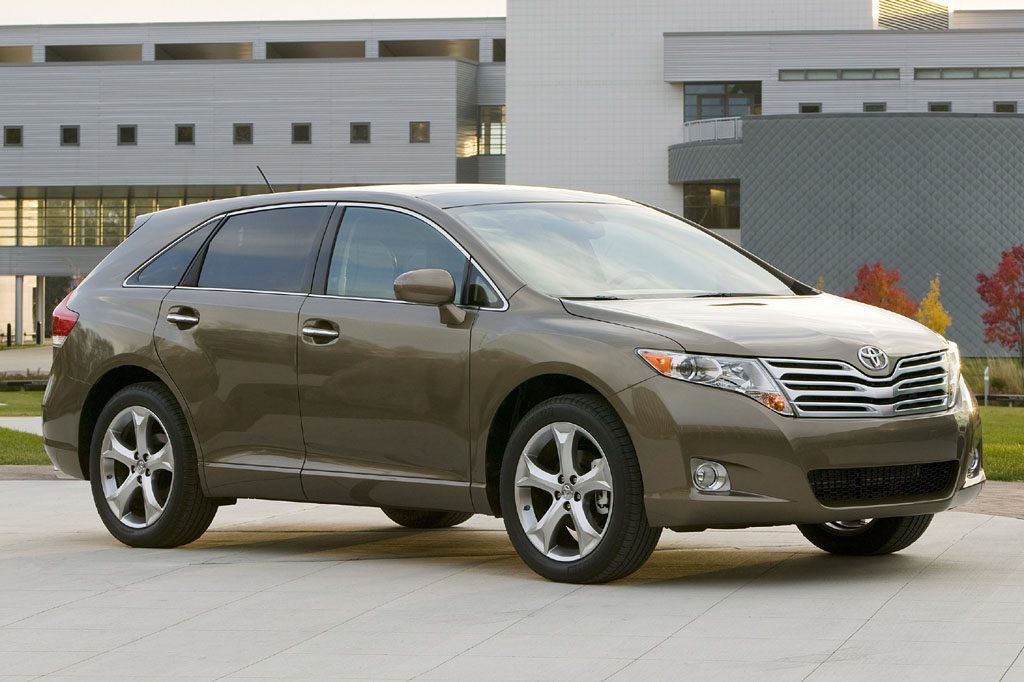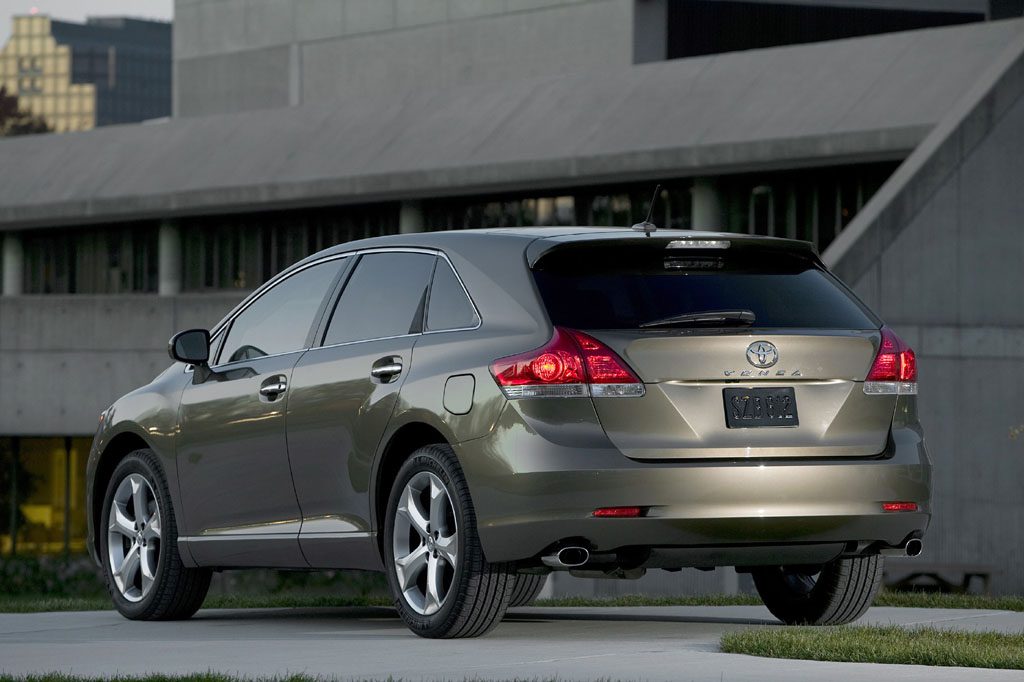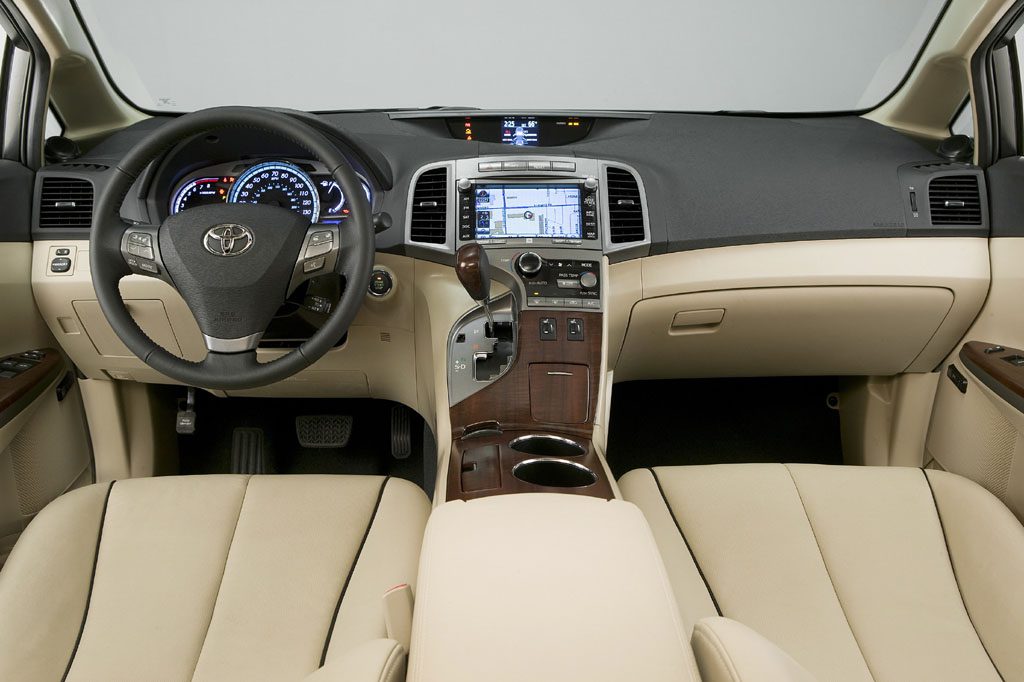| Midsize SUV; Built in USA |
|
|
| Good condition price range: $6,800 – $24,600* |

2009 Toyota Venza Front

2009 Toyota Venza Rear

2009 Toyota Venza Interior

2009 Toyota Venza Profile
| Pros: |
|
| Cons: |
|
Like the Camry and Highlander upon which it’s based, Venza simply isn’t an excitement machine. On the other hand, it’s quite versatile and surprisingly roomy. Avoid the underpowered four-cylinder engine in favor of the smoother, more refined V6. Overall, Venza is more like a traditional station wagon. As such, it seems compromised by American-market realities that prefer SUV-flavored crossovers. New-car pricing has been on the steep side, and used-car prices may remain high due to Toyota’s long-standing reputation for reliability and traditional strong resale value.
Overview
Launched for 2009, the brand-new Toyota Venza was the latest addition to this widely-known Japanese automaker’s lineup. In size and price, this midsize four-door, five-passenger wagon slotted between the Camry sedan and the Highlander crossover SUV. Sharing some of its basic design with both of those vehicles, Venza came in a single trim level, with a choice of two engines and either front-wheel or all-wheel drive. The base engine was a 182-horsepower 2.7-liter four-cylinder. Offered as an alternative was a 268-horsepower 3.5-liter V6. Each engine teamed with a six-speed automatic transmission. Four-cylinder models could tow up to 2500 pounds, and the V6 could tow as much as 3500 pounds. Standard safety features included antilock brakes, traction control, an antiskid system, front side airbags, curtain side airbags with rollover deployment, and a driver’s knee airbag. Four-cylinder models came with 19-inch wheels, while V6 versions rode on standard 20-inch wheels. A navigation system, keyless access and engine start, leather upholstery, and heated front seats were among the Venza options. A panoramic glass roof with power front section also was optional, along with DVD entertainment, but both of these features could not be ordered together. Competitors included the Kia Rondo, Nissan Murano, and Subaru Outback.
Yearly Updates
| 2010 Venza No major change was evident in Venza’s second season. All Venzas now had iPod connectivity, as well as a USB port for an auxiliary music source and Bluetooth wireless technology. Venza was one of the Toyota vehicles recalled for a sticking accelerator pedal, amid a flurry of negative publicity for the company. |
| 2011 Venza The 2011 Toyota Venza was largely unchanged. |
| 2012 Venza The model lineup for the 2012 Toyota Venza was broken into LE, XLE, and Limited trim levels, but there were no other changes of note. |
| 2013 Venza Toyota gave Venza a freshening for 2013. Highlights included updated styling and some new features, including the brand’s Entune infotainment system. |
| 2014 Venza For 2014, some Venza models received extra standard features. XLE and Limted models added power-folding side mirrors, and the Limited picked up front and rear parking sensors. |
| 2015 Venza Toyota’s car-like crossover SUV received a few minor updates for its swan-song season: A rearview camera was standard on all models, and all V6 Venzas were equipped with a towing package. |
